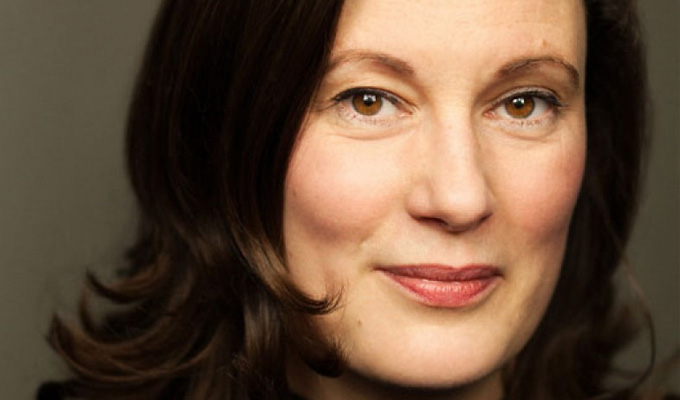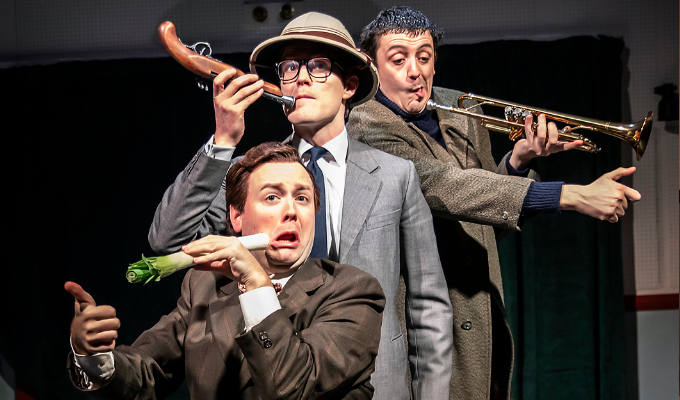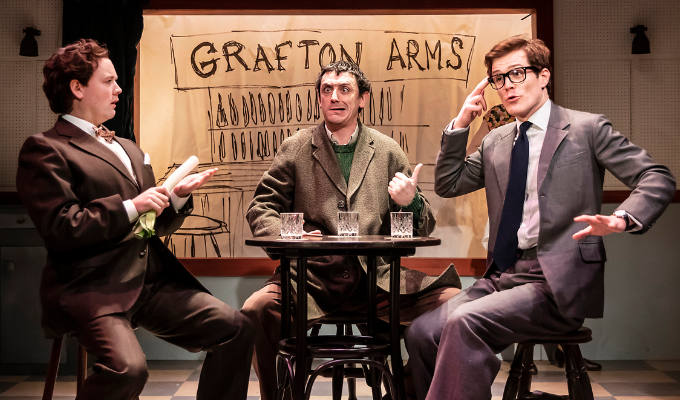

Spike
Review of Ian Hislop and Nick Newman’s play about the Goon show mastermind
It’s hard to overestimate Spike Milligan’s influence on British comedy. He almost single-handedly used the Goon Show to challenge stiff post-war radio programming with a vibrant anarchy that has, directly or indirectly, influenced every off-the-wall comedian who followed.
Plenty, too, has been written about what impact the pressure of writing 30 episodes a year almost single-handed had on his mental state, already made fragile by the shell-shock – PTSD we’d call it now – of his wartime experiences.
Ian Hislop and Nick Newman’s new theatrical biography of his Goon Show years clearly comes from two keen fans. But it uses the ‘tortured genius’ cliché too casually – and while sporadically funny, can’t capture the full gusto of the trio’s comic pandemonium, however fast-paced.
Action flits between the BBC studios, the pub, Milligan’s home life and flashbacks - in a literal sense - to the deadly chaos of war that had such a devastating effect on his mental wellbeing. No wonder so many Goon show episodes ended with a literal bang.
Devotees of vintage radio comedy will already be aware of the absurd true incidents depicted here, from the clueless executive who thought the show was titled The Go On show, or the years when the nation thought ventriloquism was an art-form well-suited to radio. Nonetheless, this entertaining production still wrings incredulous laughs from repeating such trivia – as well as from zany smatterings from Milligan’s original scripts.
It’s also enlivened by the performances, especially John Dalgleish, who is charismatically shabby, flighty and insecure in the lead role. He frequently clashes with George Kemp, as Peter Sellers, a debonair man-about town strangely beholden to new-age mumbo-jumbo, while Jeremy Lloyd’s jaunty Harry Secombe is the perennial peacekeeper.

However, the script throws little new light on the remarkable, but troubled, character of Milligan. If anything, it shies away from showing his full turmoil. The well-documented incident in which he burst into Seller’s home threatening to kill him is played as a light anecdote, where the truth is much darker.
Even without being troubled by the mental scars of war, Milligan would have been fully justified in his frustrations about how he was never appreciated in his time. A running refrain in the show is how he was paid half the salary of Sellers and Secombe as they were ‘talent’ - and he a lowly writer who just happened to perform. How chronically undervalued he was.
In this relatively superficial telling of Milligan’s story, director Paul Hart sets a brisk pace that captures some of the frenetic energy of the Goon Show recordings. But that’s something of a fig leaf for a dramatically stagnant narrative, that has Milligan repeatedly rubbing up against stick-in-the-mud, officer-class, BBC executive (Robert Mountford), a caricature of a suit who just doesn’t get it.
Such conflicts, along with Milligan’s continual ability to deliver a script on time, become repetitive, and the supporting cast never get much chance to flesh out their characters, nor really develop them. Any evolution in the story comes from external forces: the fact the Goons got so successful that the Corporation had to embrace them, even if they didn’t understand them.
Some challenge to the boys’ club that was the 1950s BBC comes in the form of Margaret Cabourn-Smith’s talented special effects expert, charged with bringing Milligan’s outlandish visions to life. She introduces each half with a talk about how Milligan’s scripts push the limits of her craft – scenes that are are written and performed with a nerdy deadpan that emphasises the humour.

Seventy years on, still nothing sounds quite like a Goon Show episode. But they are now part of history, their sense of rebellion muted. This affectionate and spirited tribute similarly lacks surprise – although it will serve as nostalgia for those who remember the show, as the age demographic of the audience attests. But it doesn’t fully embraces the fearless, youthful unpredictability of the original, not delve too deeply into Milligan’s complicated personality.
• Spike is at the Watermill Theatre, Newbury, until March 5.
Published: 2 Feb 2022
Where DO they get their ideas? In Brexit, a newly installed…
20/06/2019
It’s been written by comedian Danielle Ward,…
9/08/2018
The Penny Dreadfuls: Le Carré On Spying
They’ve previously taken on everything from to…
8/07/2017
Best known as The Congress Of Oddities, Margaret Cabourn-Smith…
26/08/2010
Real Daniel O'Donnell Show Presents: The Clock Hour
If you were genetically creating the ideal sketch team,…
1/01/2008
Description
To come
1/01/2006
Past Shows
Agent
We do not currently hold contact details for Margaret Cabourn-Smith's agent. If you are a comic or agent wanting your details to appear here, for a one-off fee of £59, email steve@chortle.co.uk.
